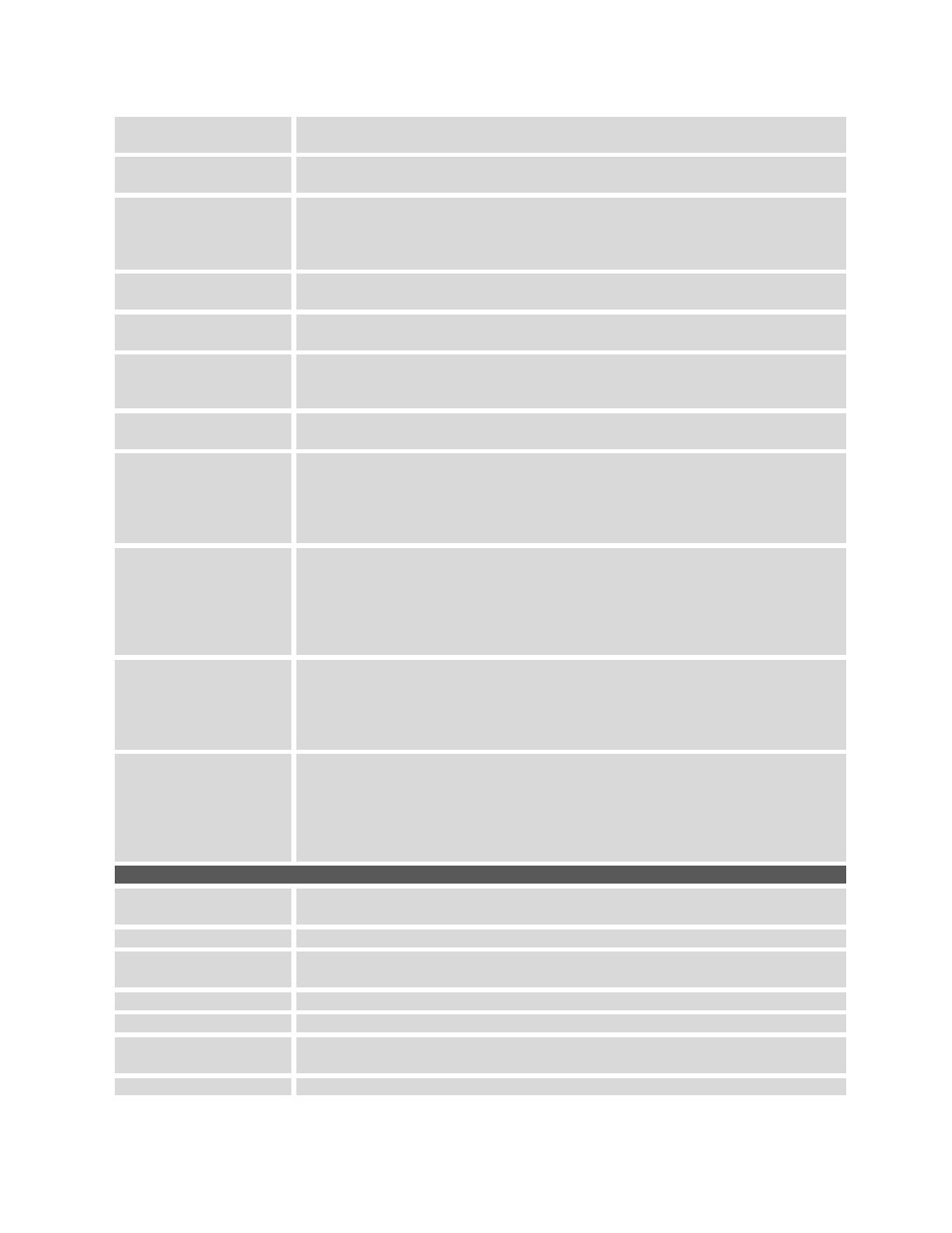Grandstream GXP1610 Administration Guide User Manual
Page 25

GXP1610/GXP1620/GXP1625/GXP1628
Administration Guide
Page 24 of 49
SIP Transport
Determines the network protocol used for the SIP transport. Users can
choose from TCP, UDP and TLS.
SIP URI Scheme when
using TLS
Specifies if "sip:" or "sips:" will be used when TLS/TCP is selected for SIP
Transport. The default setting is "sips:".
Use Actual Ephemeral
Port in Contact with
TCP/TLS
This option is used to control the port information in the Via header and
Contact header. If set to No, these port numbers will use the permanent
listening port on the phone. Otherwise, they will use the ephemeral port for
the particular connection.
Remove OBP from
Route
Configures to remove outbound proxy from route. This is used for the SIP
Extension to notify the SIP server that the device is behind a NAT/Firewall.
Support SIP Instance
ID
Defines whether SIP Instance ID is supported or not. The default setting is
"Yes".
SUBSCRIBE for MWI
When set to "Yes", a SUBSCRIBE for Message Waiting Indication will be sent
periodically. The phone supports synchronized and non-synchronized MWI.
The default setting is "No".
SUBSCRIBE for
Registration
When set to "Yes", a SUBSCRIBE for Registration will be sent out
periodically. The default setting is "No".
Enable 100rel
The use of the PRACK (Provisional Acknowledgment) method enables
reliability to SIP provisional responses (1xx series). This is very important in
order to support PSTN internetworking. To invoke a reliable provisional
response, the 100rel tag is appended to the value of the required header of
the initial signaling messages.
Caller ID Display
When set to "Auto", the phone will look for the caller ID in the order of P-
Asserted Identity Header, Remote-Party-ID Header and From Header in the
incoming SIP INVITE. When set to "Disabled", all incoming calls are displayed
with "Unavailable". When set to "From Header", the phone will display the
caller ID based on the From Header in the incoming SIP INVITE. The default
setting is "Auto".
Use Privacy Header
Controls whether the Privacy Header will present in the SIP INVITE message
or not. The default setting is "default": the Privacy Header will show in INVITE
unless "Huawei IMS" special feature is on. If set to "Yes", the Privacy Header
will always show in INVITE. If set to "No", the Privacy Header will not show in
INVITE.
Use P-Preferred-
Identity Header
Controls whether the P-Preferred-Identity Header will present in the SIP
INVITE message or not. The default setting is "default": the P-Preferred-
Identity Header will show in INVITE unless "Huawei IMS" special feature is
on.
If set to "Yes", the P-Preferred-Identity Header will always show in INVITE.
If set to "No", the P-Preferred-Identity Header will not show in INVITE.
Account x -> SIP Settings -> Advanced Features
Line-seize Timeout
Defines the interval (in seconds) before the line can be sized when Shared
Line is used. The valid range is 15 to 60.
Eventlist BLF URI
Configure Eventlist BLF URI to monitor the extensions on Multi Purpose Keys.
Auto Provision Eventlist
BLFs
Select whether or not an empty MPKs will be automatically provisioned to
monitored extension in the Eventlist BLFs.
Conference URI
Configures the conference URI when using Broadsoft N-way calling feature.
Music On Hold URI
Music On Hold URI to call when a call is on hold if server supports it
BLF Call-pickup Prefix
Configures the prefix prepended to the BLF extension when the phone picks
up a call with BLF key.
PUBLISH for Presence
Enables Presence feature on the phone.
